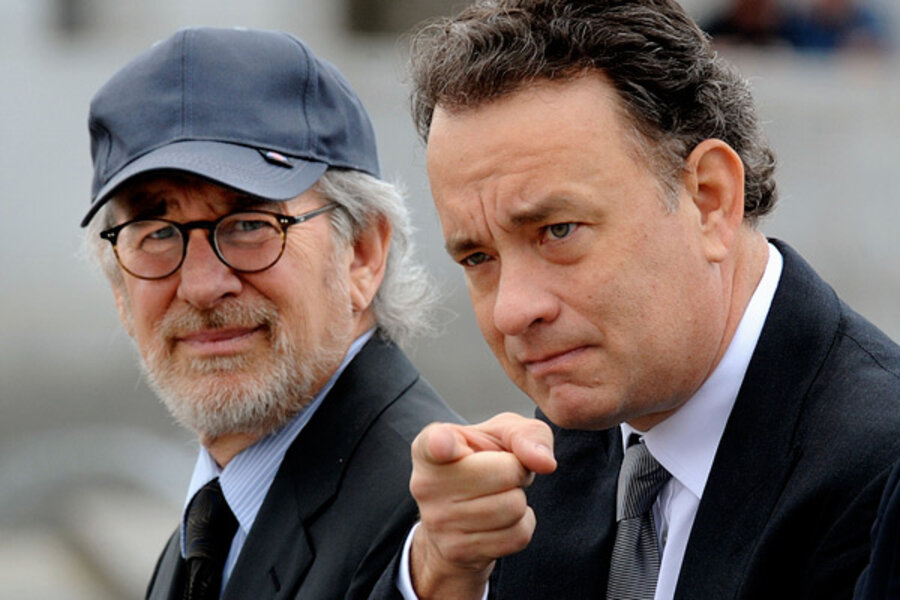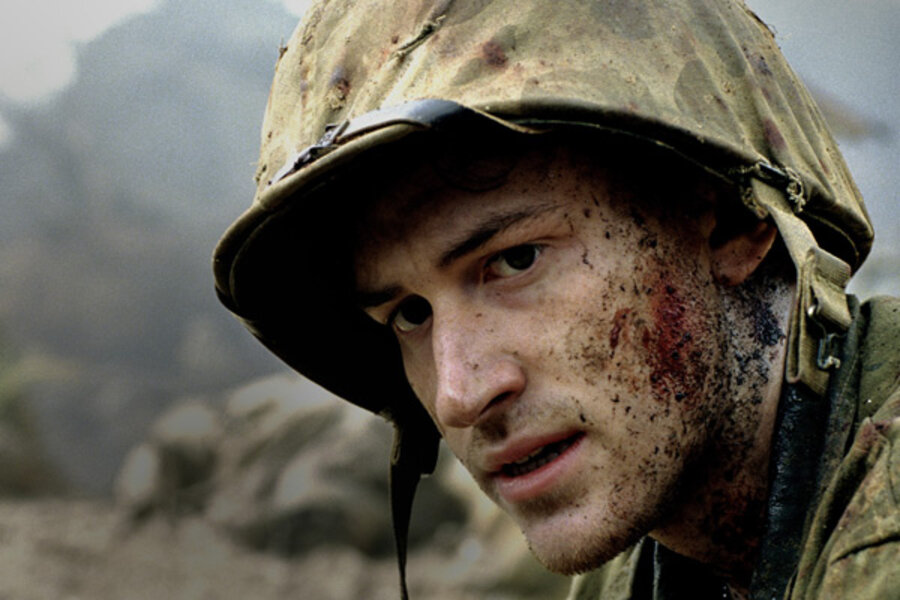Behind 'The Pacific' -- Hanks, Spielberg discuss HBO miniseries
Loading...
| Los Angeles
Tom Hanks and Steven Spielberg swapped other people's war stories to groundbreaking, heartbreaking effect in "Saving Private Ryan" and "Band of Brothers."
The unsparing and visceral depiction of battle in their World War II collaborations is revisited by "The Pacific," a 10-part, $195 million miniseries debuting Sunday at 9 p.m. EST on HBO. Also intact is their celebration of the American veteran.
But "The Pacific" carves its own path across a lesser-known theater of war with parallels to current conflicts. It also breaks the "Band of Brothers" mold by following its battered Marines home with a coda reminiscent of the classic World War II film, "The Best Years of Our Lives."
IN PICTURES: Scenes from the World War II Memorial in Washington, DC
The challenge "was to take human beings and put them through hell and wonder how in the world they would approach the world when they came back," Hanks said.
"Part 10 is the first time we went for it," he said.
The new HBO miniseries was born of its predecessor, 2001's acclaimed, Emmy-winning "Band of Brothers," which dramatized the true story of a company of paratroopers fighting in Europe.
"We only told a partial story in 'Band,'" Spielberg said. "My own relatives were saying to me, 'We all fought in the Pacific. That's a different story. It was jungle warfare.'"
The filmmaker's father, Arnold, battled the Japanese in Burma and an uncle flew B-29s over Japan. Other Pacific theater veterans wrote to Spielberg, "wanting me to tell their story."
The challenge for executive producers Hanks, Spielberg and Gary Goetzman was that the U.S.-Japanese conflict sprawled across a series of remote islands and lacked the European landmarks that gave "Band of Brothers" an instant familiarity.
The men of "The Pacific" fought for dirt on Guadalcanal, New Britain, Pavuvu, Peleliu and Iwo Jima. The miniseries opens shortly after the 1941 Japanese attack on Pearl Harbor in Hawaii, follows the path of three young Marines and ends on the home front in 1946 after Japan's surrender.
"You get to see who these men were before they come into the war, where they came from, why they wanted to get into it. ... You get to see how they came out of it, if they did at all," said cast member Joe Mazzello. "You get the full scope of what it's like to be an American Marine in that time."
Mazzello, like his co-stars, plays a real member of the First Marine Division. The miniseries focuses on Eugene B. Sledge (Mazzello) and Robert Leckie (James Badge Dale), both privates and authors of memoirs used in developing the miniseries, as well as Sgt. John Basilone (Jon Seda), awarded the Medal of Honor.
"The hardest part was portraying these men and trying to tell their stories truthfully," said Dale, a sentiment echoed by Mazzello and Seda during a joint interview.
Even as the producers vowed to go deep into the truth of the Pacific fight and whether U.S. troops emerged as heroic or not, producer Goetzman said he eventually realized, "You just can't help but have such an unabiding respect for these vets."
According to Hanks, the Pacific theater they faced was far different from the European one.
"The war in the Pacific was more like the wars we've seen ever since, a war of racism and terror, a war of absolute horrors, both on the battlefield and in the regular living conditions," he said.
IN PICTURES: Scenes from the World War II Memorial in Washington, DC
Besides the suffering faced by soldiers, there are scenes in the miniseries depicting Japan's forced use of civilian islanders as unwilling suicide bombers. In one scene, a woman is blown up by a body bomb; her infant is in her hands.
"We want the viewing public to be prepared that there is a level of savagery in 'The Pacific' that is more intense than in 'Band of Brothers,'" Spielberg said.
"Anything less than the graphic nature of that war, or for that matter any war, would have been met by scorn by the veterans who fought in it," he said. "It would have just been one more Hollywoodized portrayal of an event that rends your body ... and often doesn't create even a memory of your existence. That's war, that's what happens."
Co-executive producer Bruce McKenna, a writer who started research for "The Pacific" shortly after working on "Band of Brothers," said the violence is historically accurate.
Okinawa was the site of the "most horrible battle that Americans fought in World War II," he said. "There were 8 million artillery rounds fired, one every second."
The estimated death toll, according to several historical accounts, included more than 100,000 Japanese troops, at least 75,000 Okinawans and more than 12,000 U.S. troops.
Australia stood in for most of the miniseries' locations, including the war zones and U.S. scenes, during about a year of filming in 2007-2008. More than 90 sets were built, with 62,000 tons of earth excavated at a quarry outside of Melbourne to build Iwo Jima and Okinawa battlefields.
There were six writers and six directors on the project, with retired Marine Capt. Dale Dye serving as military adviser as he did on "Band of Brothers."
The actors acknowledge that conditions fell short of actual war but were hellish nonetheless.
"You were not comfortable on that set for one day," said Mazzello, with 110-degree weather that made clothes burn against skin and with an unending supply of flies "trying to get in your nose and eyes."
"They actually CGI'ed out flies because there were too many on our faces," Seda said, using shorthand for computer-generated imagery.
Spielberg and Hanks are intent on honoring both history and those who lived it with their World War II films, helping to narrow what Spielberg calls "the generation gap" between his father's generation and the ones that followed.
There are other ambitions for their latest project. Asked if they expect "The Pacific" to resonate with viewers when it comes to the conflicts America faces today, Hanks responded quickly.
"We want it to resonate completely," he said. "The war in the Pacific was a war of terror and racism, of suicide attacks. Both sides viewed the other side as being subhuman dogs, from a civilization that didn't recognize the advancement of human kind.
"Sound familiar? Sound like something that might be going on?" he asked, referring to the U.S.-Middle Eastern conflict.
He noted that Americans who once bitterly dismissed the Japanese as barbaric now accept them as friends and equals.
"Right now we're facing a different part of the world where they view us and we view them as an aberration of humanity," Hanks said. "There's a possibility that somewhere down the line, 60 years from now, we can look at the people that are trying to kill us and we are killing now as we do the Japanese today."
The two Hollywood A-listers acknowledge that their earliest collaboration, a slight 1986 film comedy in which Hanks starred and that Spielberg produced, gave no hint of their future roles as respected war chroniclers.
"When we first worked together, on 'The Money Pit,' if somebody had come to me and said, 'You two guys are gonna get a job telling historical stories ... more specifically, World War II history,' I would have said, 'You're nuts,'" Hank said, smiling broadly.
IN PICTURES: Scenes from the World War II Memorial in Washington, DC






